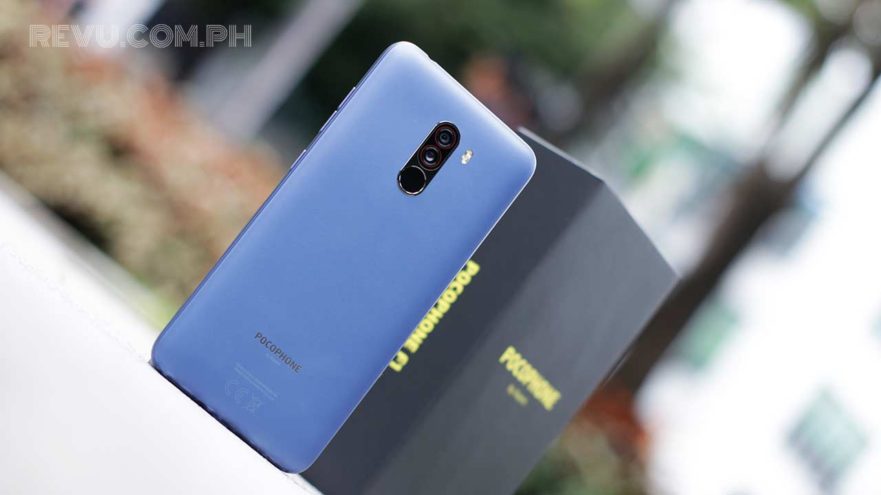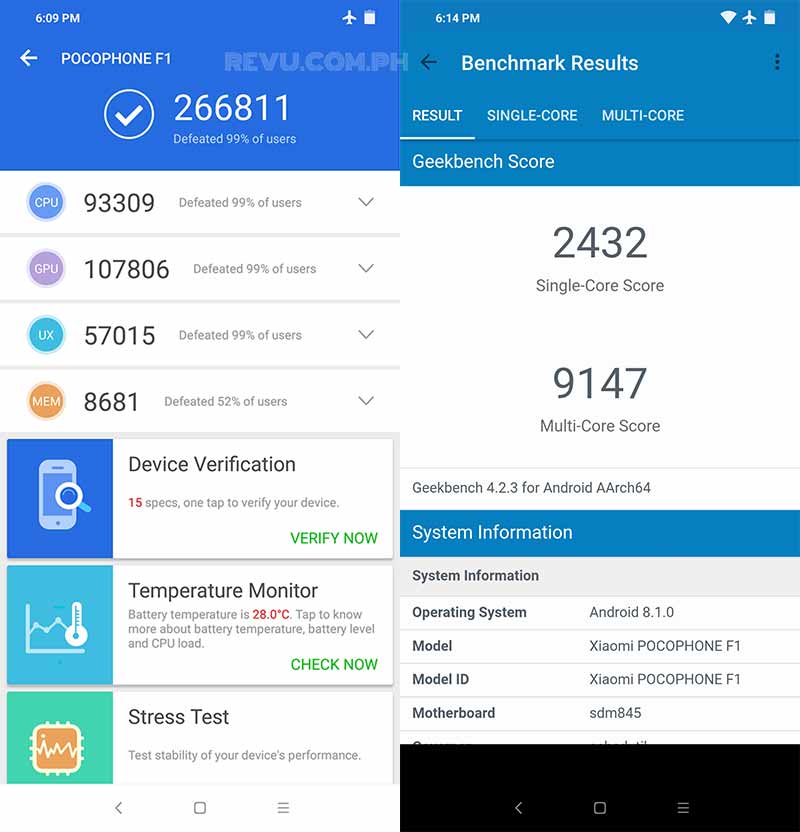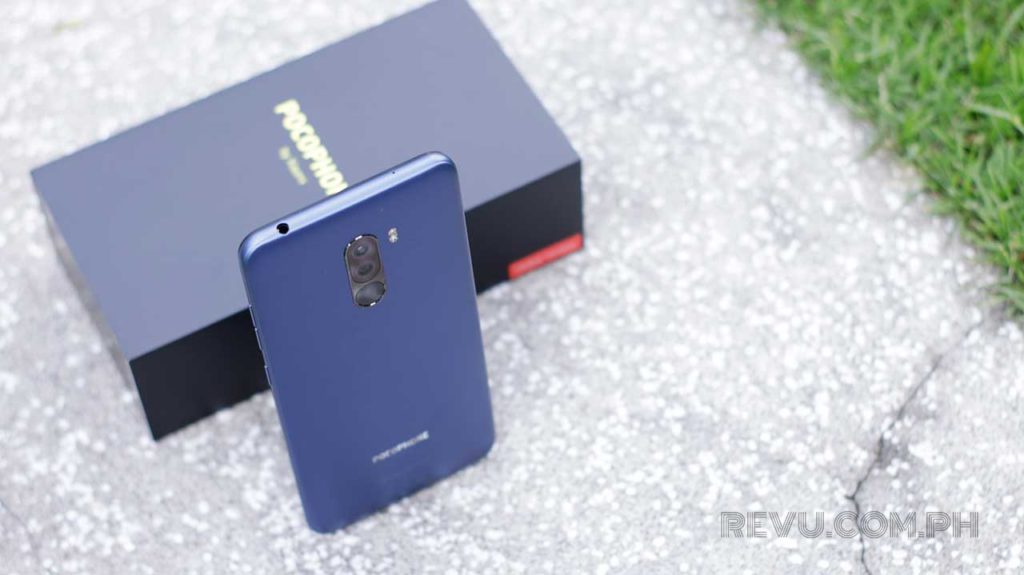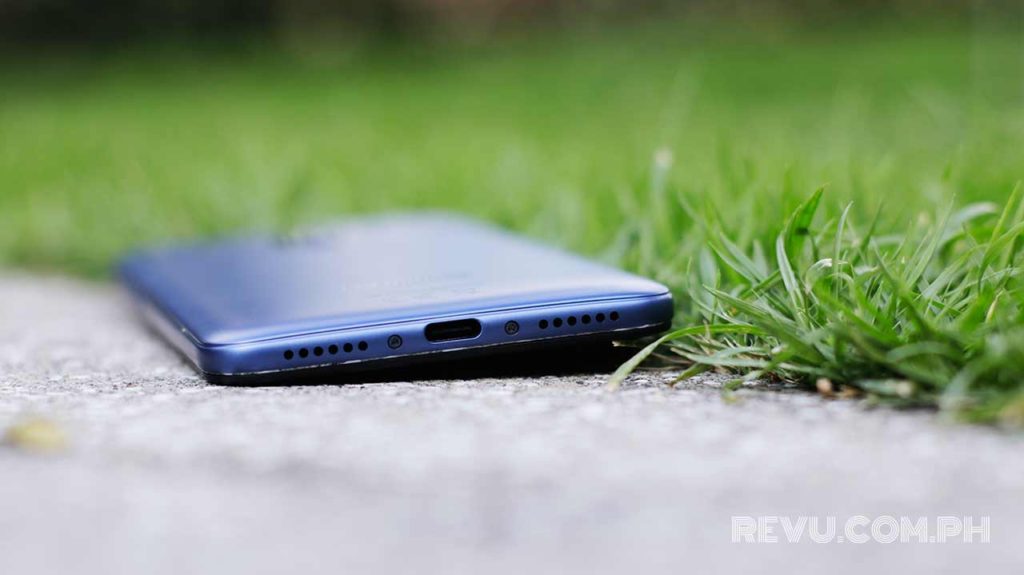Some phones impress with their design and engineering work. Some, with their bleeding-edge specs and speed. And still some, with their value for money, selling at a price that disrupts the market and forces other companies (but not all — cough, cough, Apple) to re-evaluate their existing operations.
The Xiaomi-made Pocophone F1, otherwise known as Poco F1 in India, isn’t all those things. However, it does make you wonder how much you should spend on a smartphone if your first priority is speed and graphics performance.
READ ALSO: Xiaomi Pocophone F1 Philippine prices, availability
Because this phone, regardless of the variant you get (the RAM and storage check in at up to 8GB and 256GB, respectively), is indeed ridiculously beefed up for its price. And the internals do make it more responsive, more gaming-friendly when compared to devices at its price point.
At only P17,990 (around $334) for 6GB RAM and 64GB storage in the Philippines, the Xiaomi Pocophone F1 already packs a Qualcomm Snapdragon 845 on the inside. Yes, no typo there: The same processor as many top-of-the-line choices running Android. It’s also the most powerful component available to non-Apple phone makers, at least according to popular benchmark apps.
SEE ALSO: OPPO Find X, Xiaomi Pocophone F1 among new best-performing Androids
Both the pricey Samsung Galaxy Note 9 for the U.S. and Chinese markets and the Xiaomi Black Shark gaming phone, which has been consistently ranked as the best-performing handset on the planet ever since it came out, are built around the Snapdragon 845. Even the most ambitious devices out there — the OPPO Find X and Vivo NEX are two that immediately come to mind — run Qualcomm’s latest and greatest.
We haven’t seen anything quite like the Pocophone F1 in recent memory — and it’s absolutely bonkers that something with so much computing potential retails for less than some options in the mid-tier segment. The closest comparison we have is the original OnePlus phone, which was a pain to purchase initially.
Xiaomi is not selling the Pocophone F1 through an invite system — and thank God for that. This phone is simply too good to not be included on the short list of anyone looking for exceptional value and impeccable usability.
And while it should be obvious that the first Pocophone is the best gaming phone one can get without having to break the bank, it’s also a good performer when tasked to do less strenuous tasks such as streaming YouTube content and snapping a photo in daylight.
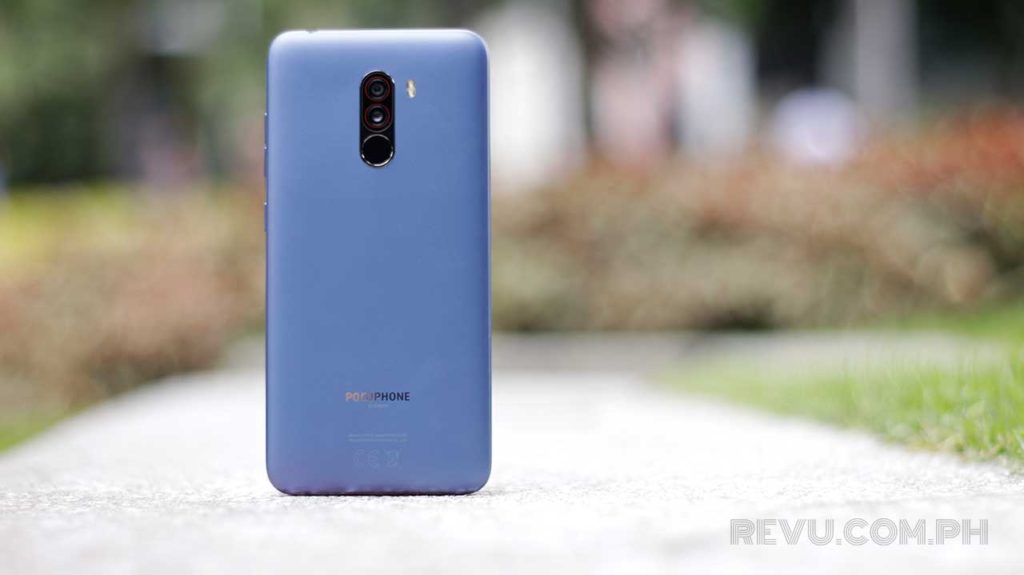
The other key attractions Xiaomi has put in place — the liquid-cooled heat pipe for better thermal management; infrared camera for face detection; fast charging through the bundled USB-C charger — can make a significant enough impact on the day-to-day experience of using the Pocophone F1.
The other key attractions Xiaomi has put in place — the liquid-cooled heat pipe for better thermal management; infrared camera for face detection; fast charging through the bundled USB-C charger — can make a significant enough impact on the day-to-day experience of using the device. Not to mention, we hardly ever see these features included in a midrange product.
The Pocophone F1 is not quite the perfect smartphone, however. There are some hardware quirks that may turn some people off it. But it does so many things so well that we can almost guarantee you’ll like it despite all the shortcomings and some doubts.
Hardware
Practical is a word we’d use to define the Xiaomi Pocophone F1’s exterior. The outer shell is made of polycarbonate (read: plastic), which doesn’t creak or flex in any way that would make you worry. The surface also has a non-reflective matte finish to minimize the appearance of fingerprints and smudges. You won’t find a snazzy, gradient back here.
Hidden from plain sight, the inner assembly features a metal frame to hold the components together, and partly explains why the Pocophone F1 is way heavier than it looks. It doesn’t feel at all like other devices that have a plastic casing, but in a good way.
READ ALSO: Huawei Nova 3 vs. Xiaomi Mi 8: Hardware, camera, gaming comparison
From an aesthetics standpoint, there are obvious downsides to skipping a glass rear panel and unibody construction. On the other hand, plastic has its advantages, too. It’s more durable and scratches less than glass, transmits heat less rapidly, and allows a good cellular signal to pass through.
It’s also worth mentioning that the two rear cameras sit almost flush against the body and have colored accents around their lenses, which is a nice touch. Below the cameras, you’ll find the Xiaomi Pocophone F1’s fingerprint reader, located where your index finger would naturally rest. Unlocking the phone using the dedicated sensor has proven to be quick and reliable in our experience.
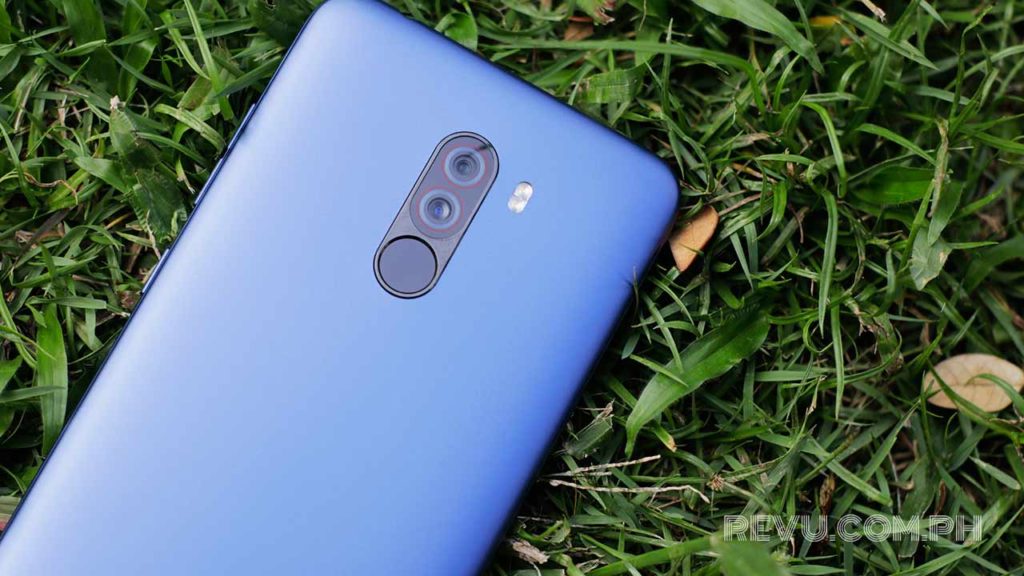
The Xiaomi Pocophone F1’s two rear cameras sit almost flush against the body and have colored accents around their lenses. Below the cameras is a fingerprint sensor.
There’s also face unlock, which works great in low light, thanks to a combination of an infrared camera and illuminator housed in the notch area on the front, something we don’t see often — even among premium models. Most companies add facial recognition to the selfie camera and call it day. Not Xiaomi, though.
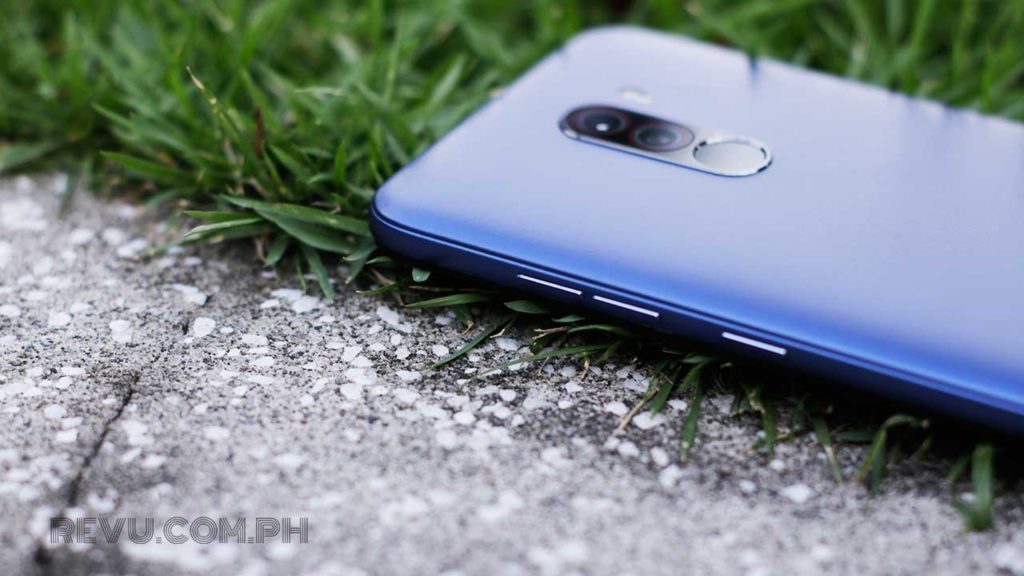
The nano-SIM card tray and hybrid slot for an extra SIM card or expandable storage can be found on the left side.
The left-hand side is where one finds the nano-SIM card tray and hybrid slot for an extra SIM card or expandable storage. Up top, there’s a headphone jack, although the box doesn’t include earbuds. Xiaomi will happily sell you some if you still don’t own a pair.
There’s a USB-C port at the bottom, next to a single loudspeaker. It’s been widely speculated that the Pocophone F1 has stereo speakers. Well, we’re sorry to burst your bubble, but we have the definitive answer: It doesn’t. What’s actually present is a second speaker cutout to appeal to our collective sense of symmetry.
Sound quality is decent for a mono speaker, thankfully, and it gets loud enough that you can use it to fill a small space with sound without distortion.
Screen
Moving onto the display side, the Xiaomi Pocophone F1 has been equipped with a 6.18-inch IPS-LCD screen running at full resolution and an 18.7:9 aspect ratio.
There are bigger, higher-quality panels in its price category, of course. But for gaming and viewing content — which you’ll probably do fairly often on this device — it should more than suffice. It’s crisp and sufficiently bright, offers good color reproduction, and stays color-accurate at awkward angles.
Because of the notch, the bezels are smaller, too, allowing for an immersive viewing experience. As long as you don’t mind looking at the uneven black borders around the screen, that is. The chin at the base is particularly large, perhaps even large enough to fit the Pocophone branding on the backplate without adjusting its size.
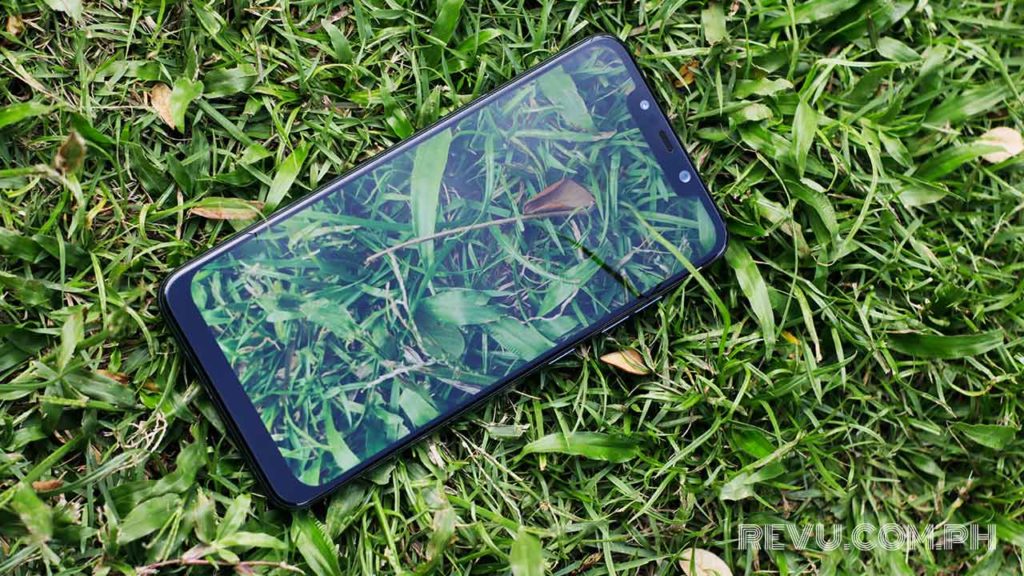
Because of the Xiaomi Pocophone F1’s notch, the bezels are smaller, too, allowing for an immersive viewing experience. As long as you don’t mind looking at the uneven black borders around the screen, that is.
In reality, what it does fit is a single-color (white) notification light that might take a while to get used to, especially if you’ve trained your eyes to look at the top bezel every now and then for notifications on messages, missed calls, and more.
And since we’re somewhat on topic, we’ll address the elephant in the room: The Xiaomi Pocophone F1 indeed lacks support for HD playback in Netflix, Amazon Prime Video, and Hulu, among other streaming services.
Why? The simplest explanation we can offer is that the handset doesn’t ship with the necessary certification to watch high-resolution videos in some apps. The maximum playback quality it supports is 540p, which isn’t bad given the Pocophone’s not-so-large display.
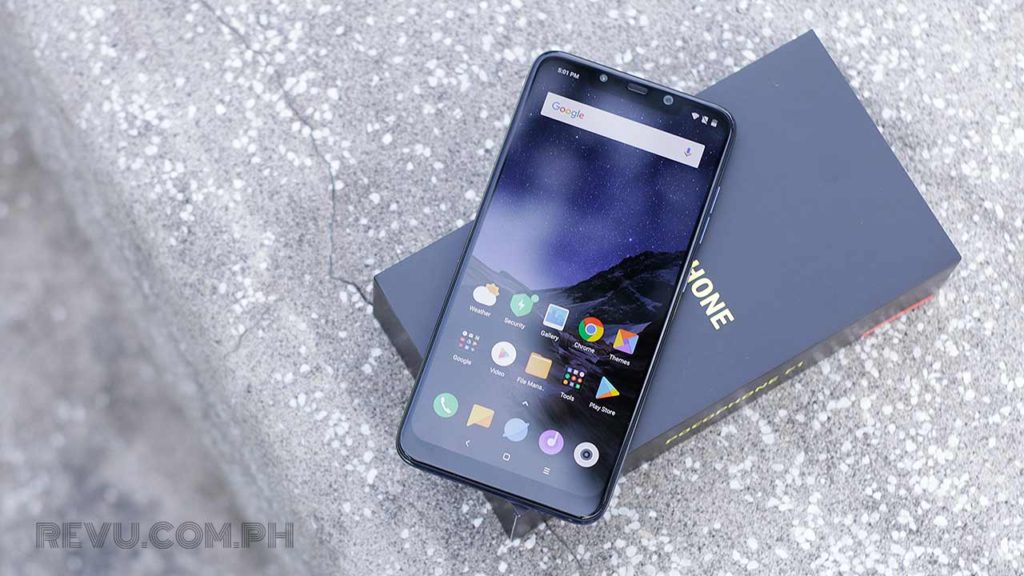
The Xiaomi Pocophone F1 lacks support for HD playback in Netflix, Amazon Prime Video, and Hulu, among other streaming services. It’s not a deal-breaker for us because of the device’s not-so-large display.
Fixing this issue via a software update isn’t possible, at least according to reports we’ve read, as upgrading to the certification required for 720p, 1080p, and even 4K content would require owners to physically send their devices to Xiaomi. The company must also be willing to spend extra on certification, which costs money better spent elsewhere.
It’s not a deal-breaker for us, by any means — because we’re totally fine with 540p on a 6-inch screen, and YouTube isn’t affected at all by the issue — but we know that some of you might not feel the same way.
Cameras
After its global announcement, we received plenty of inquiries asking about the Xiaomi Pocophone F1’s imaging performance, specifically when using the 12- and 5-megapixel rear cameras to take photos. Which is completely understandable, as we don’t normally expect exceptional results out of reasonably priced smartphones that promise exceptional graphics computing.
To be clear, the Pocophone doesn’t have a first-rate system, and you’ll notice more noise and a lot less detail, most notably outside the focus area, when lighting is poor. But even still, some of the pictures we’ve taken are almost comparable in quality to those taken with a dedicated camera.
[sciba leftsrc=”https://www.revu.com.ph/wp-content/uploads/2018/09/Xiaomi-Pocophone-F1-sample-picture-colored-rgb-review-Revu-Philippines-a.jpg” leftlabel=”Colored” rightsrc=”https://www.revu.com.ph/wp-content/uploads/2018/09/Xiaomi-Pocophone-F1-sample-picture-black-white-monochrome-review-Revu-Philippines-a.jpg” rightlabel=”Black and white” mode=”horizontal” width=””]If you think that your photo is a bit noisy, you can always stylize it. Here, we took another shot of the flower, but this time in black and white
The focusing is fast and accurate, and both standard and portrait-style images come out with a decent bokeh or depth-of-field effect. Outdoor shots in daytime, in particular, show good color accuracy and sharp detail, all while avoiding over-exposing in most settings.
Pictures taken with the Xiaomi Pocophone F1
Video quality is okay in areas with sufficient light, and electronic image stabilization compensates for jittery movement and seems to do a good-enough job of keeping things steady. For regular video, the Pocophone F1 can record at up to 4K resolution at 30 frames per second. Slow-motion recording at up to 240 frames per second is possible as well, though you’ll need plenty of light to get a bright footage.
On the front, the selfie camera has been outfitted with a 20-megapixel sensor and f/2.0 aperture. Portrait mode is available using the front-facing camera, and there are filters and beauty edits to try out, such as those that make your face look slender and lighten your skin tone.
[sciba leftsrc=”https://www.revu.com.ph/wp-content/uploads/2018/09/Xiaomi-Pocophone-F1-sample-selfie-picture-auto-mode-review-Revu-Philippines-a.jpg” leftlabel=”Auto mode” rightsrc=”https://www.revu.com.ph/wp-content/uploads/2018/09/Xiaomi-Pocophone-F1-sample-selfie-picture-portrait-mode-bokeh-effect-review-Revu-Philippines-a.jpg” rightlabel=”Portrait mode” mode=”horizontal” width=””]Selfies captured on the Xiaomi Pocophone F1: Auto mode vs. Portrait mode (with bokeh effect)
Like most phones in the segment, the Pocophone offers an AI option within the default photo mode, which, when activated, adjusts the camera settings automatically for a more vibrant picture. Compared to phones with an AI setting, though, it doesn’t alter the image dramatically. We actually don’t see a significant change between regular and AI-enhanced photos.
Gaming
If there’s one task the Xiaomi Pocophone F1 is built for, it’s gaming. As we mentioned earlier, Qualcomm’s latest and fastest Snapdragon 845 sits inside the assembly, and it’s the same chip you’ll find in the most premium devices on the market today.
That said, the Pocophone feels every bit as fluid and responsive as a flagship Android phone should. We really cannot tell the difference in overall speed between our unit (which “only” has 6GB RAM) and other Snapdragon 845-equipped models that cost a hell of a lot more money. This observation, of course, extends to gaming where the phone shines the brightest.
Gaming on the Xiaomi Pocophone F1: PUBG Mobile, NBA 2K18 (6:30 mark), and Darkness Rises (11:45 mark)
Just look at these GameBench numbers. Our unit delivered high frame rates across the board while remaining stable during use. Notably, Honkai Impact 3, visually impressive and heavy on effects due to the nature of the 3D-action genre, hit close to 60 frames per second at the highest detail possible, whereas crowd favorites PUBG Mobile and NBA 2K18 both encoded more than 30 frames per second natively.
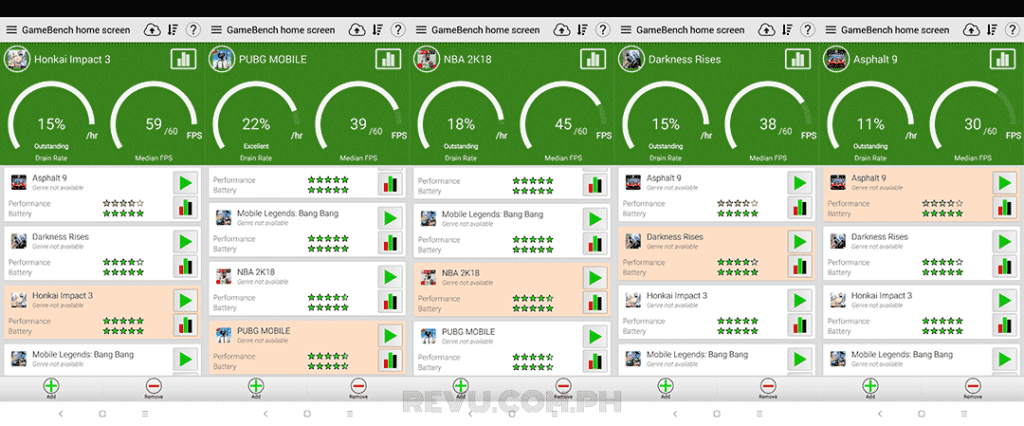
Our Xiaomi Pocophone F1 unit delivered high frame rates across the board while remaining stable during use.
Crucially, the Pocophone F1 doesn’t get too hot either, and even after prolonged use, overheating isn’t a problem. It’s partly because of the plastic back. It’s also because Xiaomi has added a heat pipe that’s better at moving heat away from the CPU — up to 300 percent more effective than conventional, non-liquid-cooling solutions, according to the company. We can’t vouch for that claim, but it does leave a good impression.
Battery and charging
Battery life on the Pocophone doesn’t disappoint. In fact, we’re comfortably able to get a full day of medium to heavy use without needing to charge the 4,000mAh power cell the phone carries. Extended gaming sessions will obviously cut the battery life short.
Battery life on the Xiaomi Pocophone F1 doesn’t disappoint. In fact, we’re comfortably able to get a full day of medium to heavy use without needing to charge its 4,000mAh battery.
There’s fast-charging capability here, though, and that should mean shorter charging using the included 18-watt power adapter. It usually takes us around two hours to replenish a dead battery to full. That isn’t bad considering the battery capacity.
Final thoughts
Those who spend a crazy amount of time playing mobile games but are keeping an eye on their spending will love this. But even if you aren’t into gaming on a smaller screen, the performance benefits of having the fastest processor on the block at your disposal are plenty and can be felt within the first few minutes of using the Pocophone F1.
Xiaomi set out to make the most capable phone at the most reasonable possible cost. And it did — with fewer compromises than we had initially thought. For the price, we can’t ask for a faster, more satisfying product than what the company has put in front of us.
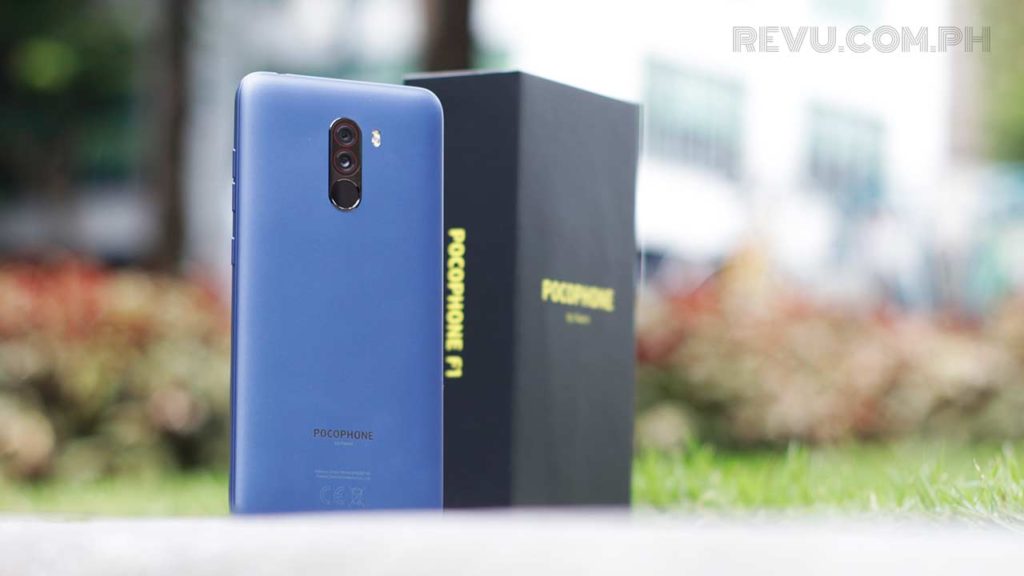
Xiaomi set out to make the most capable phone at the most reasonable possible cost. And it did — with fewer compromises than we had initially thought.
Xiaomi Pocophone F1 (Poco F1) specs
- 6.18-inch LCD display, 2,246 x 1,080 resolution (18.7:9)
- LiquidCool Technology cooling system
- Octa-core Qualcomm Snapdragon 845 processor
- 6GB/8GB RAM
- 64GB/128GB/256GB expandable memory
- Dual 12- and 5-megapixel rear cameras with LED flash
- 20-megapixel front camera
- Fingerprint reader (rear-mounted)
- 4,000mAh battery
- MIUI 9.6 based on Android 8.1 Oreo
Share this Post

